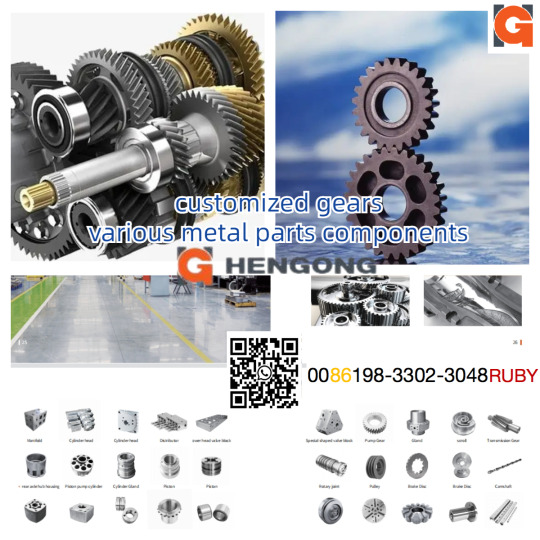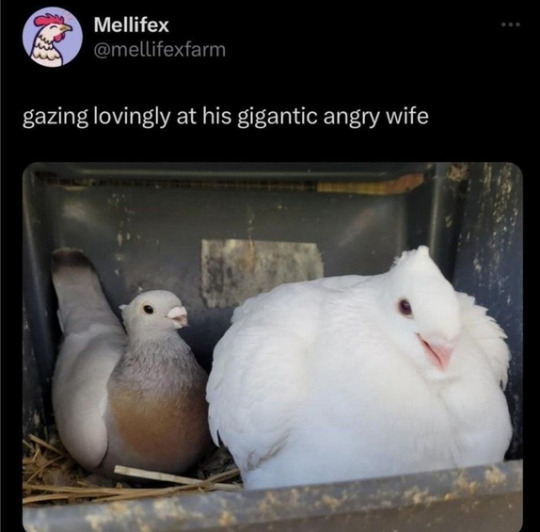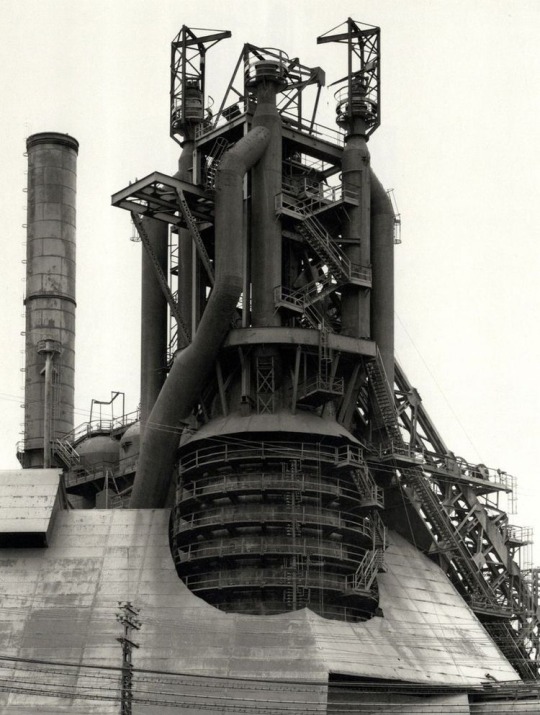#steel foundry
Text

Rotary kilns under construction at the Vickers-Armstrong Steel Foundry Tynesie, UK (1928)
53 notes
·
View notes
Text
veeeery slowly making my way through the steel foundry... i don't have my usual keyboard, i only have a trackpad for a mouse, and i'm sick, so it's been a time and a half




#we ALL hate it here#but i gotta disassemble these fuckers#so that i can beat gortash to death#i did manage to get the hellfire engine crossbow though#a hellfire weapon for my infernal girl#karlach#astarion#wyll#shadowheart#bg3 act 3 spoilers#steel foundry#bg3#john baldur#nuclear.7z#origin karlach
9 notes
·
View notes
Text


I am from a Chinese listed company HGPE,Asia biggest continuous cast iron bar factory,and we also customized metal parts manufactured by our hundreds of CNC machines and lathes(hydraulic parts,air compressor parts,auto parts,robot parts,reducer parts…),OEM& ODM available.thanks®ards:) 🙏https://www.hengong-bar.com +8619833023048 [email protected]

#casting#iron bars#steel foundry#metalparts#reduceri#hydraulic cylinder#gears#skid and pump#auto parts
0 notes
Text
Uncovering the Materials of Steel: A Comprehensive Guide
Steel, a fundamental material in our contemporary society, is almost everywhere in our surroundings. It serves as the structural backbone of our towering skyscrapers, the sturdy frames of our automobiles, and even the everyday utensils we use in our kitchens.
However, even with its widespread use, a fundamental question often needs to be answered: What steel is made of?
In this article, we will delve into the world of steel and explore its composition, properties, and its crucial role in our daily lives.
The Basic Ingredients of Steel:
Steel is an alloy at its core, which means it is made up of many elements. Steel is made up mostly of iron and carbon. Iron is a naturally occurring element plentiful in the Earth's crust. On its own, it is robust and durable, yet it may be fragile. This is when carbon enters the picture. At the steel foundry, they mix iron with carbon. Iron is fortified with carbon to increase its strength and flexibility, making it more appropriate for various uses.
The Carbon Connection:
The quantity of carbon in steel may vary, giving birth to various steel varieties. Carbon content generally varies between 0.2% and 2.1% by weight. The material is termed low-carbon steel when the carbon content is less than 0.2%. As the carbon percentage rises, it becomes medium-carbon and high-carbon steel. Each kind has its own set of characteristics and uses.
For example, low-carbon steel is well-known for its ductility and ease of shape. It is often used in construction, automobile manufacturing, and even ordinary goods like nails and wire.
Medium carbon steel achieves a good blend of strength and flexibility. It is often utilized to produce equipment, tools, and structural components.
In contrast, high-carbon steel is very strong yet less bendable. It is used in applications with high hardness and wear resistance, such as cutting tools and springs.
But wait, there's another steel player in town: stainless steel. Stainless steel is distinguished by its resistance to rust and corrosion due to the inclusion of chromium during the stainless steel casting. As a result, it has become popular in the culinary world, as well as in medical equipment and many ornamental uses.
Alloying Elements:
While iron and carbon are the fundamental constituents of steel, different alloying elements may be added to improve its qualities. Among the most frequent alloying elements are:
Manganese: This element increases steel's strength and hardenability. It is often used in structural steel and railway rails.
Chromium: Adding chromium improves corrosion resistance, resulting in stainless steel. This steel is often used in kitchenware, medical devices, and architectural projects.
Nickel: In steel foundry, nickel is mixed in steel as it contributes to strength and toughness, making steel suitable for applications like aircraft parts and pipelines.
Vanadium: Vanadium is well-known for increasing steel's hardness and wear resistance. It is often utilized in the manufacture of high-speed equipment and knives.
Molybdenum: Molybdenum enhances steel's heat resistance, making it useful in aerospace and power generation sectors.
Silicon: Silicon aids in the deoxidization of steel and its strength and electrical conductivity. It is often found in electrical steel used in transformers and motors.
The SteelmakingSteelmaking Process:
The production of steel involves several steps. It begins with the extraction of iron ore from the Earth's crust. This ore is then smelted in a blast furnace to remove impurities and reduce it to pig iron, which is high in carbon.
Next, the pig iron is refined in a process called "steelmaking." During this phase, the carbon content is carefully controlled by adding or removing carbon and alloying elements. This process can be done through various methods, including the Bessemer, open-hearth, or electric arc furnace processes.
Once the desired composition is achieved, the molten steel is poured into molds to form various shapes, such as sheets, bars, or coils. These shapes are then cooled and solidified, ready for further processing and use in various industries. Many stainless steel casting manufacturers in India are using new methods to create even better products.
Final Thoughts:
In conclusion, steel is a remarkable material that combines the strength of iron with the versatility of carbon and various alloying elements. Its composition can be tailored to suit a myriad of applications, from everyday household items to critical components in aerospace and construction. Understanding steel's basic ingredients and production process sheds light on its importance in our modern world, where it continues to shape our lives in countless ways.
If you need top-quality steel items, check out Sujan Industries. They're known for their excellent steel products and are experts in steel casting.
0 notes
Text
Uncovering the Materials of Steel: A Comprehensive Guide
Steel, a fundamental material in our contemporary society, is almost everywhere in our surroundings. It serves as the structural backbone of our towering skyscrapers, the sturdy frames of our automobiles, and even the everyday utensils we use in our kitchens.
However, even with its widespread use, a fundamental question often needs to be answered: What steel is made of?
In this article, we will delve into the world of steel and explore its composition, properties, and its crucial role in our daily lives.
The Basic Ingredients of Steel:
Steel is an alloy at its core, which means it is made up of many elements. Steel is made up mostly of iron and carbon. Iron is a naturally occurring element plentiful in the Earth's crust. On its own, it is robust and durable, yet it may be fragile. This is when carbon enters the picture. At the steel foundry, they mix iron with carbon. Iron is fortified with carbon to increase its strength and flexibility, making it more appropriate for various uses.
The Carbon Connection:
The quantity of carbon in steel may vary, giving birth to various steel varieties. Carbon content generally varies between 0.2% and 2.1% by weight. The material is termed low-carbon steel when the carbon content is less than 0.2%. As the carbon percentage rises, it becomes medium-carbon and high-carbon steel. Each kind has its own set of characteristics and uses.
For example, low-carbon steel is well-known for its ductility and ease of shape. It is often used in construction, automobile manufacturing, and even ordinary goods like nails and wire.
Medium carbon steel achieves a good blend of strength and flexibility. It is often utilized to produce equipment, tools, and structural components.
In contrast, high-carbon steel is very strong yet less bendable. It is used in applications with high hardness and wear resistance, such as cutting tools and springs.
But wait, there's another steel player in town: stainless steel. Stainless steel is distinguished by its resistance to rust and corrosion due to the inclusion of chromium during the stainless steel casting. As a result, it has become popular in the culinary world, as well as in medical equipment and many ornamental uses.
Alloying Elements:
While iron and carbon are the fundamental constituents of steel, different alloying elements may be added to improve its qualities. Among the most frequent alloying elements are:
Manganese: This element increases steel's strength and hardenability. It is often used in structural steel and railway rails.
Chromium: Adding chromium improves corrosion resistance, resulting in stainless steel. This steel is often used in kitchenware, medical devices, and architectural projects.
Nickel: In steel foundry, nickel is mixed in steel as it contributes to strength and toughness, making steel suitable for applications like aircraft parts and pipelines.
Vanadium: Vanadium is well-known for increasing steel's hardness and wear resistance. It is often utilized in the manufacture of high-speed equipment and knives.
Molybdenum: Molybdenum enhances steel's heat resistance, making it useful in aerospace and power generation sectors.
Silicon: Silicon aids in the deoxidization of steel and its strength and electrical conductivity. It is often found in electrical steel used in transformers and motors.
The SteelmakingSteelmaking Process:
The production of steel involves several steps. It begins with the extraction of iron ore from the Earth's crust. This ore is then smelted in a blast furnace to remove impurities and reduce it to pig iron, which is high in carbon.
Next, the pig iron is refined in a process called "steelmaking." During this phase, the carbon content is carefully controlled by adding or removing carbon and alloying elements. This process can be done through various methods, including the Bessemer, open-hearth, or electric arc furnace processes.
Once the desired composition is achieved, the molten steel is poured into molds to form various shapes, such as sheets, bars, or coils. These shapes are then cooled and solidified, ready for further processing and use in various industries. Many stainless steel casting manufacturers in India are using new methods to create even better products.
Final Thoughts:
In conclusion, steel is a remarkable material that combines the strength of iron with the versatility of carbon and various alloying elements. Its composition can be tailored to suit a myriad of applications, from everyday household items to critical components in aerospace and construction. Understanding steel's basic ingredients and production process sheds light on its importance in our modern world, where it continues to shape our lives in countless ways.
If you need top-quality steel items, check out Sujan Industries. They're known for their excellent steel products and are experts in steel casting.
0 notes
Text

Now we're putting Astarion in Situations™
| First | | Previous | | Next |
[[ All Croissant Adventures (chronological, desktop) ]]
[[ All Croissant Adventures (app) ]]
#the boy really went through it in the foundry lmao#p.s. I'm going to start doing a M-W-F schedule next week#we're approaching endgame and I'm creeping up on my backlog so I want to make sure I have enough time to make some of these longer comics#yes I am already crying about approaching the end of the journey don't worry about it :''''''''''')#bg3#baldur's gate 3#bg3 spoilers#act III spoilers#steel watch foundry#croissant adventures#tav#astarion#steel watch#comics
362 notes
·
View notes
Text



Based on a conversation with @doriangaymer in my Discord server. XD
#hector carlisle#karlach#karlach x tav#tav x karlach#karlach cliffgate#the lengths i went to get this screenshot lmao#i didn't keep nearly enough hardsaves on hector's run#i had to redo the iron throne and the steel foundry and the wyrm's rock guard fights for this#but it's so them that i had to XD
65 notes
·
View notes
Text
Orin: Hey wake up
Gortash: Huh?
Orin: I just murdered your entire family.
Gortash: but I live alone?
Orin: Huh? Then who are these people in your house?
Gortash: There's people in my house?!
Orin: Well not anymore! Dumb bitch, you could've died. You're welcome.
#incorrect bg3 quotes#orin the red#enver gortash#i cant sleep so have random dialogue yanked from youtube shorts as incorrect quotes#and then the steel foundry was founded the end
23 notes
·
View notes
Text
On another note, it seems I found the trigger for Astarion's kidnapping attempt scene.
Previously, I had at least a couple of non-eventful long rests at the Elfsong before Astarion's "siblings" came to visit. But this time, I went to the Steel Foundry first, saved Volo, had a chat with him where he gave me the book on Slayers - and boom. On my second long rest in the Lower City I got Leon and Aurelia breaking in. Either Larian tweaked something or meeting Volo triggers the spawn event instantly.
It's not...bad, essentially, but I really hoped I'd get some time to kill Orin and save Yenna before moving on to other quests. Technically, I still can do it, but well it's not like my character is just going to delay dealing with the asshole who keeps sending kidnappers after her boyfriend. They failed one time, doesn't mean they will stop trying - better deal with the problem at once and not risk more people getting snatched from the camp.
But it feels like an odd way to prevent us from rushing the main quests - even though Orin's quest literally puts us on a timer. Seriously, Orin hasn't been shown as a stable individual or a woman true to her word. Why should trust her to behave and keep the hostage alive?
#baldur's gate 3#astarion#bg3 astarion#i just thought that storywise it would make sense for my tav to investigate steel foundry and then decide to deal with orin first#but larian be like: nope#orin the red#bg3 orin
24 notes
·
View notes
Text
to elaborate slightly on this idea, regarding gortash recycling durge's brain to use in a steel watcher for his personal use;
if I recall correctly, the steel watcher brains are kind of in a half-unconscious state? Like, barely aware of what they're doing, drifting in and out, to be easily controllable. but he always did like durge having their own free will, didn't he?
can you imagine how bad it would hurt to be fully awake and aware, in a body that isn't flesh, that simply doesn't fit the brain that's controlling it? I think durge would be in absolute agony, and i think that Gortash wouldn't know how to handle that fact beyond deliberately ignoring it. What else is he going to do? Put them out of their misery, after he worked so hard to preserve them?
no. no, he'll just wait it out. They're strong, after all, they're resilient and clever, they can figure out how to cope with the pain if it's so awful.
I just enjoy the image of a Gortash who doesn't know how to let go, who refuses to even consider it. No matter how much that ends up hurting durge.
#durgetash#i have other ideas but theyre very specific to My Durge so im not gonna get too into it#i keep thinking of the magnus archives episode about the guy who tries to obtain immortality by putting his brain in his computer#'the angles cut me when i try to think'#idk i just loved the horror of the steel watch foundry.#i may be misremembering slightly though since its been a while.#my thoughts
16 notes
·
View notes
Text
I now understand people's hatred for the Iron throne and steel watch foundry.
#I hate it#I'm trying to be good and save everyone#but the gondians keep doing something stupid and end up getting killed#like just run and get out of here#and those damn steel watchers are terrible#and those damn exploding collars#ugh#bg3#baldur's gate 3#feckin gortash#gondians#steel watch foundry#iron throne
12 notes
·
View notes
Text

furnace
230 notes
·
View notes
Text



Baldur's Gate 3 locations 27/?
#steel watch foundry#baldurs gate 3 locations#baldur's gate 3#bg3#bg3 screenshots#baldurs gate 3#bg3 screencaps#virtual photography#chill just a gamer cat
14 notes
·
View notes
Text




I was able to save all the captured Gondians including Wyll's father and Omeluum and so happy about it🤧 Wyll's Hunger of Hadar spell was really helpful for both missions, thank you Wyll👍✨
And I didn't know there's also Lolth cleric line for Wulbren..!
#Wyll Ravengard#Blade of Frontiers#Duke Ravengard#Omeluum#The Gondians#Steel Watch Foundry#Iron Throne#Hunger of Hadar#Lolth Sworn Drow#Wulbren Bongle#talk talk
12 notes
·
View notes
Text
The Many Applications of Stainless Steel Investment Castings
Stainless steel investment casting is an age-old technique dating back thousands of years. It has continued to evolve and adapt to modern-day needs, making it a go-to solution for various industries.
What makes stainless steel investing casting different?
The beauty of this method lies in its ability to transform complex designs into high-quality, intricate components with minimal material waste. What to know more about stainless steel casting?
Keep reading.
What is Stainless Steel Investment Casting?
Stainless steel investment casting, also known as the lost-wax casting method, is a venerable technique that dates back thousands of years. The process involves creating wax patterns of the desired component, which are then coated in a ceramic shell to form a mold.
Once the mold is cured, molten stainless steel is poured into the cavity, replacing the wax pattern. After cooling and solidification, the ceramic shell is removed, revealing the final intricately detailed stainless steel component.
Looking for quality casting services? Right from stainless steel casting to steel foundry, get quality services at Sujan Industries.
The Process
Pattern creation: The process begins with creating a wax or thermoplastic pattern replicating the final component's shape.
Mold formation: The pattern is then coated with a ceramic slurry, creating a shell around the pattern.
Dewaxing: The ceramic-coated pattern is heated, causing the wax to melt and drain away, leaving behind a hollow ceramic mold.
Casting: Molten stainless steel is poured into the ceramic mold, filling the void left by the wax.
Cooling and solidification: The mold is allowed to cool and solidify the metal.
Mold removal: The ceramic shell is broken, revealing the finished stainless steel component.
What are Common Applications for Stainless Steel Investment Castings?
Automotive: The automotive industry relies on precision components to ensure safety and performance. Stainless steel investment castings are utilized in critical automotive parts like engine components, suspension systems, and braking components. Their ability to maintain dimensional stability under high-stress conditions ensures optimal performance and longevity.
Food Processing: The food industry demands equipment that is not only hygienic but also capable of withstanding harsh conditions. Stainless steel investment castings are often used in food processing machinery, such as pumps, valves, and fittings. Their corrosion resistance and ease of cleaning make them ideal for maintaining strict sanitation standards.
Medical Equipment: In the medical field, where precision and biocompatibility are paramount, stainless steel investment castings are commonly employed. These castings are found in surgical instruments, implants, and various medical devices, thanks to their biocompatibility and ability to meet strict regulatory requirements.
Marine Applications: The marine environment is one of the most corrosive, with constant exposure to saltwater and harsh weather. Stainless steel investment castings find extensive use in marine equipment, including propellers, fittings, and marine hardware, due to their exceptional corrosion resistance and high strength.
Pipe Fittings: Stainless steel investment castings are used extensively in pipe fittings due to their corrosion resistance and leak-tight properties. These fittings find applications in plumbing, petrochemical, and fluid handling industries, ensuring efficient and safe fluid transportation.
To say, stainless steel investment casting is compatible with a wide range of stainless steel alloys, enabling stainless steel casting manufacturers in india to choose the best material for their specific application, whether it's corrosion resistance, high strength, or temperature resistance.
Over To You
Stainless steel investment castings have proven their worth across diverse industries due to their exceptional versatility and performance. If you’re looking for stainless steel casting services, you can rely on Sujan Industries. With a track record of excellence and a commitment to precision, Sujan Industries has established itself as a trusted name in the world of metal casting.
Want to know more about our services? Visit our website for more information.
0 notes
Text
there are a couple of fights in bg3 in act 3 where I swear larian called up bethesda to ask them how to program the npc behavior
#specifically the bhaalists in the park where they charge headlong into the fight#and the braindead gondians in the steel watch foundry#I am not helping npcs with this little survival instinct
7 notes
·
View notes